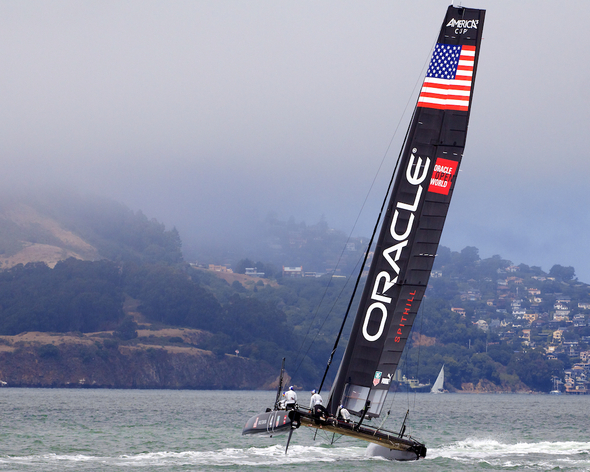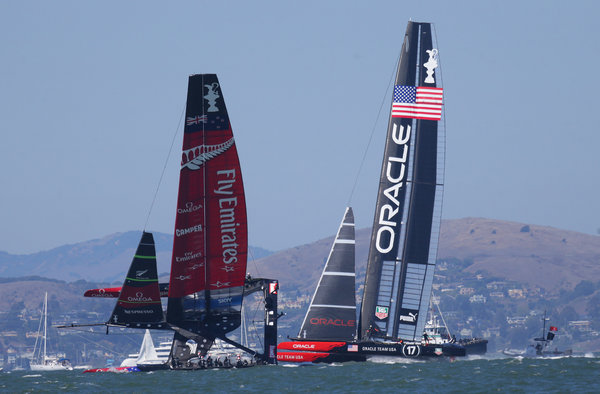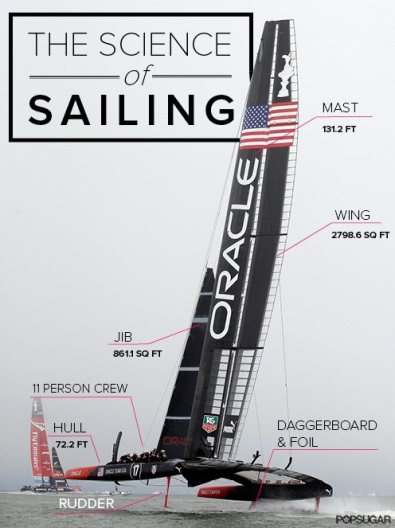The America’s Cup and NVM Express
Blog Taking a break from IDF, I had the opportunity to walk down to San Francisco Bay and had the fortune of seeing the Oracle Team USA America’s Cup boat cross my bow. For someone who grew up racing sailboats, I was awestruck at the catamarans size and the technology incorporated in the America’s Cup 72(AC72). As a gust of wind made Oracle’s speed jump, I thought “Wow, a lot of changes since the days of 12 meter boats, such as Australia III and Stars & Stripes!”
Taking a break from IDF, I had the opportunity to walk down to San Francisco Bay and had the fortune of seeing the Oracle Team USA America’s Cup boat cross my bow. For someone who grew up racing sailboats, I was awestruck at the catamarans size and the technology incorporated in the America’s Cup 72(AC72). As a gust of wind made Oracle’s speed jump, I thought “Wow, a lot of changes since the days of 12 meter boats, such as Australia III and Stars & Stripes!”
 The new AC72 is built for speed and power. During the summer, Emirates Team New Zealand established a top speed for the AC72 hitting 44.15 knots, or 50.8 mph, on San Francisco Bay. Throw in a second boat moving at a similar speed and the results can be pretty exciting to watch. On average, the boats top race speeds are consistently hitting 40 knots, about 46 mph. That’s four times faster than the average top speed of the 2007 America’s Cup boats.
The new AC72 is built for speed and power. During the summer, Emirates Team New Zealand established a top speed for the AC72 hitting 44.15 knots, or 50.8 mph, on San Francisco Bay. Throw in a second boat moving at a similar speed and the results can be pretty exciting to watch. On average, the boats top race speeds are consistently hitting 40 knots, about 46 mph. That’s four times faster than the average top speed of the 2007 America’s Cup boats.
 Gone are the days of monohulls, winged keels, fiberglass, Kevlar sails and aluminum masts. To deliver the performance these boats are capable of, they have embraced new technology, such as foils, carbon fiber, titanium, sails similar to an airplane wing and electronic sensors. For the America’s Cup race teams, adopting new technology is critical to provide a performance advantage.
Gone are the days of monohulls, winged keels, fiberglass, Kevlar sails and aluminum masts. To deliver the performance these boats are capable of, they have embraced new technology, such as foils, carbon fiber, titanium, sails similar to an airplane wing and electronic sensors. For the America’s Cup race teams, adopting new technology is critical to provide a performance advantage.
So what does this have to do with NVM Express (NVMe)? As I watched Oracle speed away, it got me thinking about NVMe. Similar to the AC72, NVMe is designed to deliver speed and power. In this case, the full performance a PCIe SSD is capable of. In comparison, SATA and SAS are the 2007 America’s Cup boats, fast for their time, but limited by their technology. So the question for you is, to take your performance to a new level, isn’t it time to embrace NVM Express?